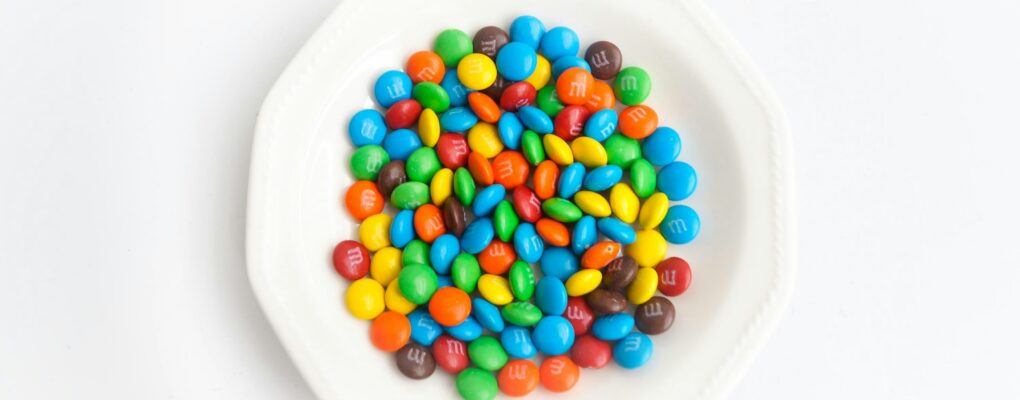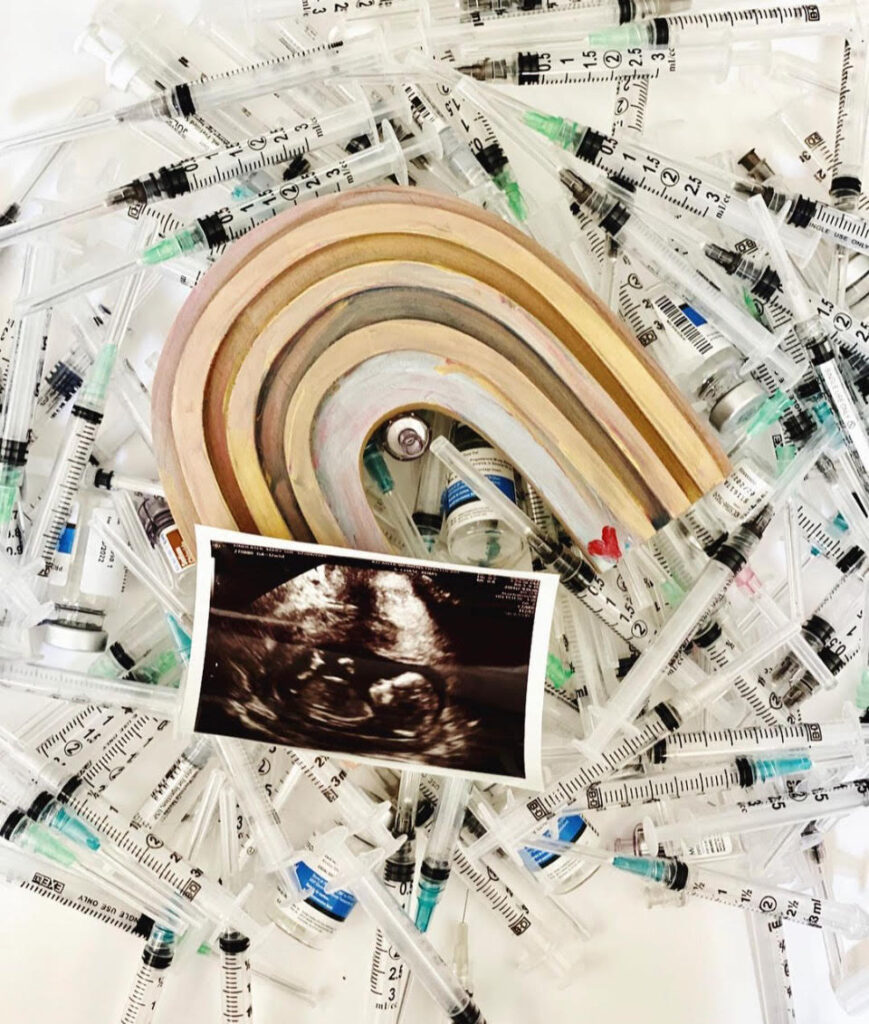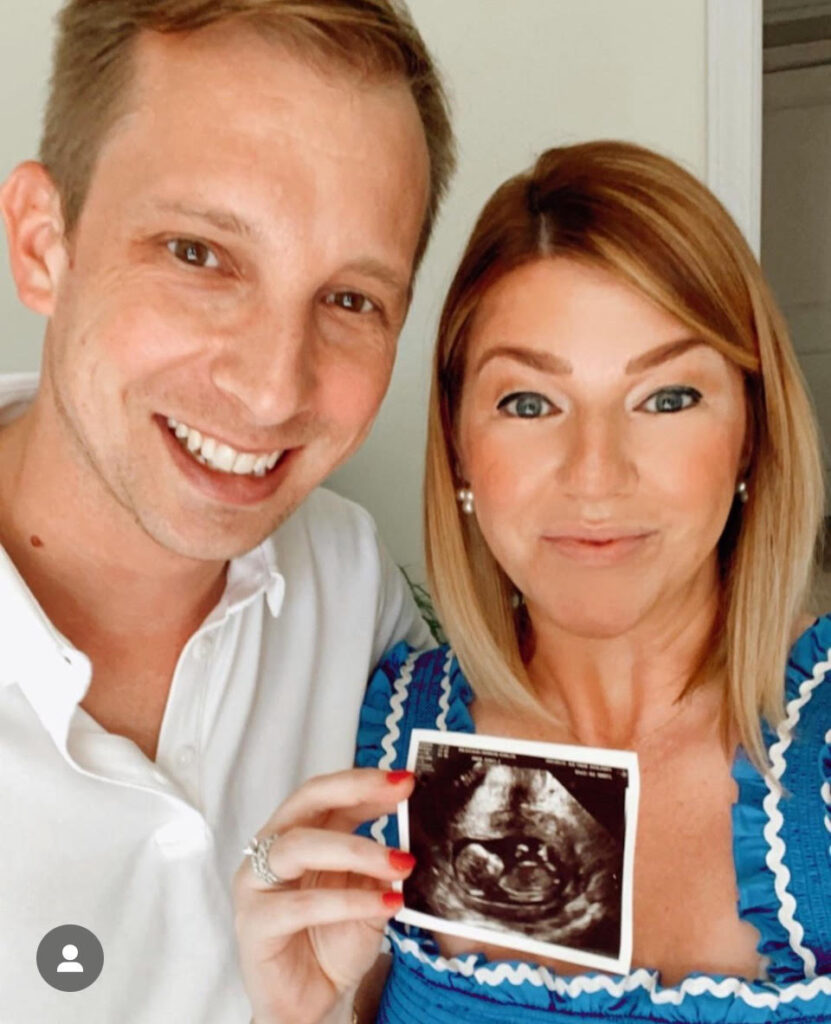
By Mary Sue Findlater
The Elusive Orange M&M
When we first met with our fertility doctor, she said, “Think about your eggs as M&Ms. The orange M&Ms are the good eggs that we could use to try to get you pregnant.”
The orange M&Ms were the eggs that were most likely to implant with healthy DNA and could result in a successful pregnancy. Knowing from my college years that my AMH levels were low, indicating a low egg count, this knowledge was a constant undercurrent in our journey to conceive. Each month, I reached into a bowl of M&Ms, filled with blues, greens, and yellows, but very few orange. The reality was sobering: a low egg count meant the bowl was often disappointingly sparse.
Our initial IVF attempt posed challenges. Despite the optimism, we retrieved only six eggs. After the embryo-making process, three survived, and genetic testing identified one as our orange M&M. We transferred our sole genetic embryo, and ten days later, the blood test confirmed pregnancy. But at nine weeks, an ultrasound revealed devastating news: no heartbeat. It was a mosaic embryo with a combination of normal and abnormal cells, and I faced a miscarriage. The aftermath—tears, loneliness, and indescribable devastation—left a hollow ache that words cannot express.
Deciding to Use an Egg Donor
The miscarriage left us with daunting decisions to make. We could try IVF again, but the likelihood of getting the same result was high. The egg retrieval wasn’t likely to find any more orange M&Ms than it had the first time. This pivotal realization led us to consider egg donation very quickly after our miscarriage. A conversation with my therapist played a significant role. She asked me, “Is the goal to have your DNA baby or a baby?” This question clarified our priorities. For us, the goal was to have a family, and that family is not defined by DNA.
We did not consider any other options at that time; we were very steadfast in our decision to move right to donor eggs. Even this quick decision surprised our doctor, but she confirmed that using donor eggs would offer a higher chance of success due to the younger age of the donor’s eggs.
Choosing the Right Donor
At our fertility clinic, we had the unique opportunity to explore an in-house database of egg donors. We got comfort from knowing that these women had undergone rigorous checks—both physical and mental—in our same clinic. Their health records were meticulously vetted, ensuring that we were making an informed choice.
Racial similarity, educational background, and health records were our criteria. We wanted our child to inherit not only physical traits but also shared experiences and cultural nuances. It was a delicate balance—a blend of science and intuition.
Yet, as we delved into this process, we realized that it wasn’t just about ticking boxes. It was about understanding the emotional weight of our decision. One online resource, Paths to Parenthub, a UK-based donor conception group, gave us a fresh perspective that focused on the male experience.
For my husband, IVF had been a challenging journey. He watched me endure multiple shots a day, several surgeries, and painful procedures. He felt helpless, sidelined by biology. Hearing other men share their struggles, their hopes, and their fears allowed him to connect. Suddenly, he wasn’t alone in this maze of emotions.
In the webinar, one husband shared their ingenious approach to picking a donor, which we used ourselves. We independently reviewed the database of egg donors, ranking our top choices on note cards. Each of us ranked the donors individually, writing down our preferences. Then, we were to flip our cards until we had the same donor. We flipped out our number one cards, and to our delight, they matched. That was it for us, no more conversation—we knew she was the right choice.
In that moment, our pick ceased to be merely a donor; she became a silent partner in our journey. She was a beacon of possibility, a bridge between dreams and reality, united by our shared purpose to create life and nurture love.
Our #1 donor stood out to me in particular. An image from her childhood showed her wearing a T-shirt from a summer camp I had attended. This seemingly insignificant detail resonated deeply, evoking a sense of shared experiences and connections beyond biology.
Emotional Journey
Our IVF path was a rollercoaster, soaring to hope’s peaks and plunging into the abyss of loss. The quiet grief of miscarriage left fragments of dreams in its wake. But it was the silence around egg donation that struck me. Sperm donation occasionally surfaced in hushed conversations, but egg donors remained hidden, whispered about only in sterile corridors. No one spoke openly about it.
Transparency became my lifeline. I opened up to friends and family, allowing them to hold me up when my own strength wavered. Their unwavering support of our IVF and egg donor journey stitched together my courage.
Mary Sue Findlater
Yet, we weren’t alone. Brave souls had walked this path before us, wrestling with the same uncertainties. In a Facebook group called Fertility Rally, I found a connection even across state lines. Daily and weekly messages from another mom-to-be eased my loneliness, becoming a wellspring of strength.
I found myself facing a series of surgeries—four in total. Each one carried its weight of fear and tears, a delicate dance between vulnerability and resilience. Transparency became my lifeline. I opened up to friends and family, allowing them to hold me up when my own strength wavered. Their unwavering support of our IVF and egg donor journey stitched together my courage.
Sharing Our News
Once we did get pregnant with our egg donor embryo, I shared our journey on Instagram and Facebook:

It’s with extremely full hearts, a ton of joy, and great humbleness that Chip and I can finally share our big news! We have laughed a lot, cried some tears, and grown closer as a family over those 192 shots, 4 surgeries, 2 procedures, 1 egg of our own, 1 miscarriage, 1 donor egg, and 2.5 years of waiting. All for this moment.
We are finally on the road we always dreamed of, but we didn’t do it alone. In between those big moments, there was the attentive support of the team at ACRM and the unconditional love and support from our family and friends. We cannot thank our people enough for just being there as we so openly went down this road to meet our rainbow baby in March.
After sharing my post, I received three heartfelt messages from others who had also embarked on egg donor journeys. Their words echoed with empathy, assuring me that I wasn’t alone. Yet, it was the third message that left a lingering ache—a confession that this person still kept their egg donor journey hidden from their family. The weight of my friend’s secrecy presses upon my heart.
Counseling Session and Preparing for Parenthood
During our egg donor journey, we attended a counseling session where the therapist offered invaluable advice. She gave us books to read to our baby, emphasizing the importance of sharing his donor conceived story early on. “Even though he won’t grasp the words,” she explained, “it’s for you—to become comfortable with telling him about his conception, what it means for him, for you, and for our community.”
We practice this delicate truth with our son, knowing that children absorb emotions. We want him to grow up without unnecessary nervousness or shame. There’s no stigma in being conceived through a donor egg. We’ve vowed that he’ll never experience that jarring “reframing” moment, never doubt who he is or where he came from. Our son’s origin begins with our donor and the opportunity she gave us to become parents. Because of our gratitude for that opportunity, our son will always know about the donor—and so will our community.
Secrets cast shadows, causing pain. I wish no one felt the shame that forces them to hide significant parts of their lives. This experience fuels my resolve. I will share openly and honestly. In vulnerability, in openness, in connection—that’s where we find our strength. By shedding light on our journeys, we ease burdens for others.
Conclusion
As I reflect on our path, I’m struck by the lessons we have learned and what we have gained. We embraced vulnerability, faced uncertainty head-on, and emerged stronger and more resilient than we ever thought possible.
But there’s a presence that lingers—a silent partner who resides in the quiet corners of my heart. Our egg donor, the weaver of dreams, is someone I think about every day. On my son’s 18th birthday, we’ll have the opportunity to reach out and show our outpouring of love—a tribute to the woman who gave us hope. She provided the opportunity to become parents to our orange M&M—our beautiful, blue-eyed baby boy.
Our journey ignited a desire to help another family complete its own story, by donating our remaining embryos through an open donation. I’ll be sharing that story here soon.

Mary Sue Findlater is originally from Rome, GA, and now lives in Atlanta with her husband, their 2.5-year-old son, and their adorable Goldendoodle. As the VP of Training and Customer Success at a tech company in the staffing industry, she is passionate about empowering others to succeed. An avid traveler, Mary Sue eagerly anticipates sharing the wonders of travel with her young son, igniting in him a sense of adventure and curiosity.
This post was contributed by a guest author as part of U.S. Donor Conceived Council’s mission to educate on the lived experiences of donor conceived people and their families. Guest posts do not necessarily reflect the views or opinions of USDCC.
Top image by Jakub Dziubak via Unsplash
